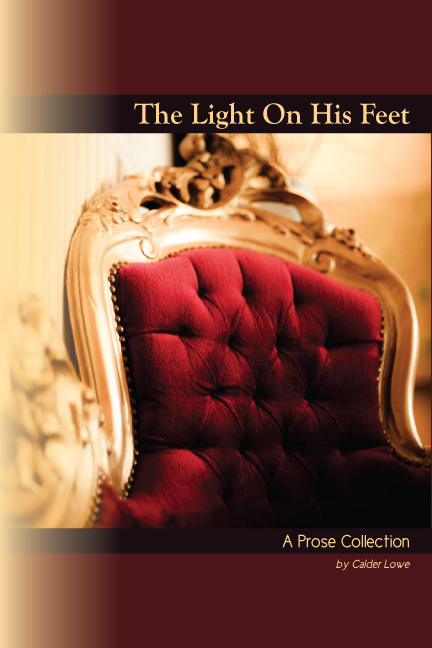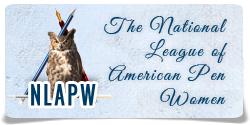by Lucille Clifton
© 2008 BOA Books, Ltd., 59 pgs.
ISBN: 9781934414125
A Review by Anne Caston
Into the raging and sometimes ugly debate in literary circles today over just who has the right to make final artistic and editorial decisions about a book – poet or editor – comes this new collection by Lucille Clifton: a refreshingly collaborative effort between Clifton and her publisher/editor, Thom Ward. Perhaps it is because Ward is a poet also that he is so finely-tuned to what is going on in the poems and makes a book worthy of them, a book which not only showcases the writing, but a book which, in itself, becomes a work of art.
I’m not speaking here just of the way the book looks, its cover art by Steve Carpenter, though that is surely part of its aesthetic beauty. I’m speaking of the way the book moves, from front cover to back cover, in a way that the poems themselves move. Let me begin with the poems, with the poet’s work.
In the earliest section of the book (“hearing”) are poems in which multiple speakers “give voice” to their surprises, angers, sorrows, longings, and experiences, voices like the ghost of Marley, Aunt Jemima, Uncle Ben, “Lu.” And hearing, like the writing of poems and the making of a book, requires a kind of attentive silence. So it isn’t a stretch of the imagination to suggest that the book begins, not in singing, but in silence. Those voices are rising from the imagination and experience of the poet. They are long-silenced voices. They are voices burdened with stories many have not heard before or considered. One must not merely listen; one must hear.
The book moves on into the second section (“being heard”) in which the speaker comes out of silence into “being heard.” In these poems, the poet – or a speaker very like the poet – illuminates a childhood spent “in the middle,” both a literal place in the gravelly middle of the road between her house and the white people’s homes, and a childhood spent as a “lightest” grandchild on whom the much-loved grandmother hangs all the hopes for someone rising out of “darkness / from that family” holding her “to what the world would call / unbearable.” No wallowing here; a man we hear only the slightest hints of what “unbearable” might mean for this speaker: a father’s inappropriate touching and who carries a raw potato in a sock for beating the woman without leaving tell-tale bruises; a mother’s madness for want of tenderness; a lost brother, lost son; the speaker’s own longing for love and tenderness and understanding; and a “rowing” for her life. The singing here is the blues. Are you hearing her yet, reader?
The final section of the book is a riff on Ten Oxherding Pictures, an allegorical series of titled paintings composed as a training guide for Chinese Buddhist monks. I might also suggest that, in these poems, is the movement of the poet/speaker through her “72 years” of living, the hands a separate thing unto themselves, always knowing what the speaker herself does not quite know until the end of the journey, until time to “enter the city with bliss-bestowing hands:” “what comes / when you whisper ox / is not / the ox/ ox begins in silence / and ends / in the folding / of hands” (from the poem titled “9th picture/returning to the origin/back to the source”).
And this is precisely what bleeds over into the art of the back cover, which is where the book’s completes its aesthetic arc. Though there are several pages, following the poems, where the typesetting and font are discussed and the author’s long credits as a writer are abbreviated and set down for a reader who might know the poet’s literary reputation, it is this final turn of the final page that brings us into the discovery of how significant is a collaboration between the poet’s art and the editor’s art. Look carefully at that back cover. Blurbs are noticeably absent. (And we know it isn’t because of a shortage of people willing to write praise for Ms. Clifton’s work. Someone made a choice here, and the other one honored that choice.) What comes into focus on the back cover is the 11th oxherding picture: the poet, the woman, sitting in silence and “in the folding of hands.” Only a remnant of a voice from the book ripples outward from that pacific ending, in that moment of closure: the poem “sorrows.” Even the artwork seems to cooperate with the moment, bleeding over from the front cover, fading out, graying.
The collection is so powerful, it seems to have exerted its influence over even the making of the book, a beautiful book in every way, a work of art that rises out of the collaboration between a poet and an editor – two artists – a work that stands counterpoint to the contemporary assertions that only one, poet or editor, has any exclusive control over the “final product” a book is. It is heartening to see that art, working subtly, still has the ability to affect, for the better, those who write and those who make books, despite anything being written, or argued, to the contrary.
Anne Caston is a poet who divides her time between Pennsylvania – where she and her husband are renovating an old farmhouse – and Alaska where she is a core faculty member in the MFA Low-Residency Program in Creative Writing. Her books are Flying Out With The Wounded (NYU Press) and Judah’s Lion (Toad Hall Press).




